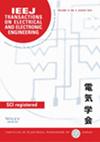求助PDF
{"title":"基于关注模块改进的端到端支柱特征神经网络自动驾驶汽车目标检测","authors":"Bin Zhang, Congzhi Ren, Hun-ok Lim","doi":"10.1002/tee.24276","DOIUrl":null,"url":null,"abstract":"<p>The development of 3D object detectors for dealing with 3D point clouds generated by LiDAR sensors is facing a significant challenge in real-world autonomous driving scenarios. Current research mainly focuses on Voxel-based detectors, which use sparse convolution for training and inference. These models often require substantial computational resources for training, making them hard to be applied to real autonomous vehicles. Among these models, two models called PointPillars and CenterPoint (pillar-version) are noticed since they are based on 2D Pillar encoding, making the inferencing process fast. However, in comparison to other models, they exhibit relatively lower detection accuracy performances. In this paper, to enhance the detection accuracy of Pillar encoding models without significantly increasing computational complexity, attention modules added within the Pillar encoder are proposed. These modules adopt the attention mechanism while reducing input dimensions. Simultaneously, the attention modules are also added to the CNN backbone network to increase the detection accuracy. The inference time increases from 16 to 17 ms, compared with the fastest PointPillar model. The effectiveness of the proposed network is proven by experiments. © 2025 Institute of Electrical Engineers of Japan and Wiley Periodicals LLC.</p>","PeriodicalId":13435,"journal":{"name":"IEEJ Transactions on Electrical and Electronic Engineering","volume":"20 8","pages":"1212-1218"},"PeriodicalIF":1.1000,"publicationDate":"2025-02-05","publicationTypes":"Journal Article","fieldsOfStudy":null,"isOpenAccess":false,"openAccessPdf":"","citationCount":"0","resultStr":"{\"title\":\"An End-to-End Pillar Feature Based Neural Network Improved by Attention Modules for Object Detection of Autonomous Vehicles\",\"authors\":\"Bin Zhang, Congzhi Ren, Hun-ok Lim\",\"doi\":\"10.1002/tee.24276\",\"DOIUrl\":null,\"url\":null,\"abstract\":\"<p>The development of 3D object detectors for dealing with 3D point clouds generated by LiDAR sensors is facing a significant challenge in real-world autonomous driving scenarios. Current research mainly focuses on Voxel-based detectors, which use sparse convolution for training and inference. These models often require substantial computational resources for training, making them hard to be applied to real autonomous vehicles. Among these models, two models called PointPillars and CenterPoint (pillar-version) are noticed since they are based on 2D Pillar encoding, making the inferencing process fast. However, in comparison to other models, they exhibit relatively lower detection accuracy performances. In this paper, to enhance the detection accuracy of Pillar encoding models without significantly increasing computational complexity, attention modules added within the Pillar encoder are proposed. These modules adopt the attention mechanism while reducing input dimensions. Simultaneously, the attention modules are also added to the CNN backbone network to increase the detection accuracy. The inference time increases from 16 to 17 ms, compared with the fastest PointPillar model. The effectiveness of the proposed network is proven by experiments. © 2025 Institute of Electrical Engineers of Japan and Wiley Periodicals LLC.</p>\",\"PeriodicalId\":13435,\"journal\":{\"name\":\"IEEJ Transactions on Electrical and Electronic Engineering\",\"volume\":\"20 8\",\"pages\":\"1212-1218\"},\"PeriodicalIF\":1.1000,\"publicationDate\":\"2025-02-05\",\"publicationTypes\":\"Journal Article\",\"fieldsOfStudy\":null,\"isOpenAccess\":false,\"openAccessPdf\":\"\",\"citationCount\":\"0\",\"resultStr\":null,\"platform\":\"Semanticscholar\",\"paperid\":null,\"PeriodicalName\":\"IEEJ Transactions on Electrical and Electronic Engineering\",\"FirstCategoryId\":\"5\",\"ListUrlMain\":\"https://onlinelibrary.wiley.com/doi/10.1002/tee.24276\",\"RegionNum\":4,\"RegionCategory\":\"工程技术\",\"ArticlePicture\":[],\"TitleCN\":null,\"AbstractTextCN\":null,\"PMCID\":null,\"EPubDate\":\"\",\"PubModel\":\"\",\"JCR\":\"Q4\",\"JCRName\":\"ENGINEERING, ELECTRICAL & ELECTRONIC\",\"Score\":null,\"Total\":0}","platform":"Semanticscholar","paperid":null,"PeriodicalName":"IEEJ Transactions on Electrical and Electronic Engineering","FirstCategoryId":"5","ListUrlMain":"https://onlinelibrary.wiley.com/doi/10.1002/tee.24276","RegionNum":4,"RegionCategory":"工程技术","ArticlePicture":[],"TitleCN":null,"AbstractTextCN":null,"PMCID":null,"EPubDate":"","PubModel":"","JCR":"Q4","JCRName":"ENGINEERING, ELECTRICAL & ELECTRONIC","Score":null,"Total":0}
引用次数: 0
引用
批量引用

 求助内容:
求助内容: 应助结果提醒方式:
应助结果提醒方式:


